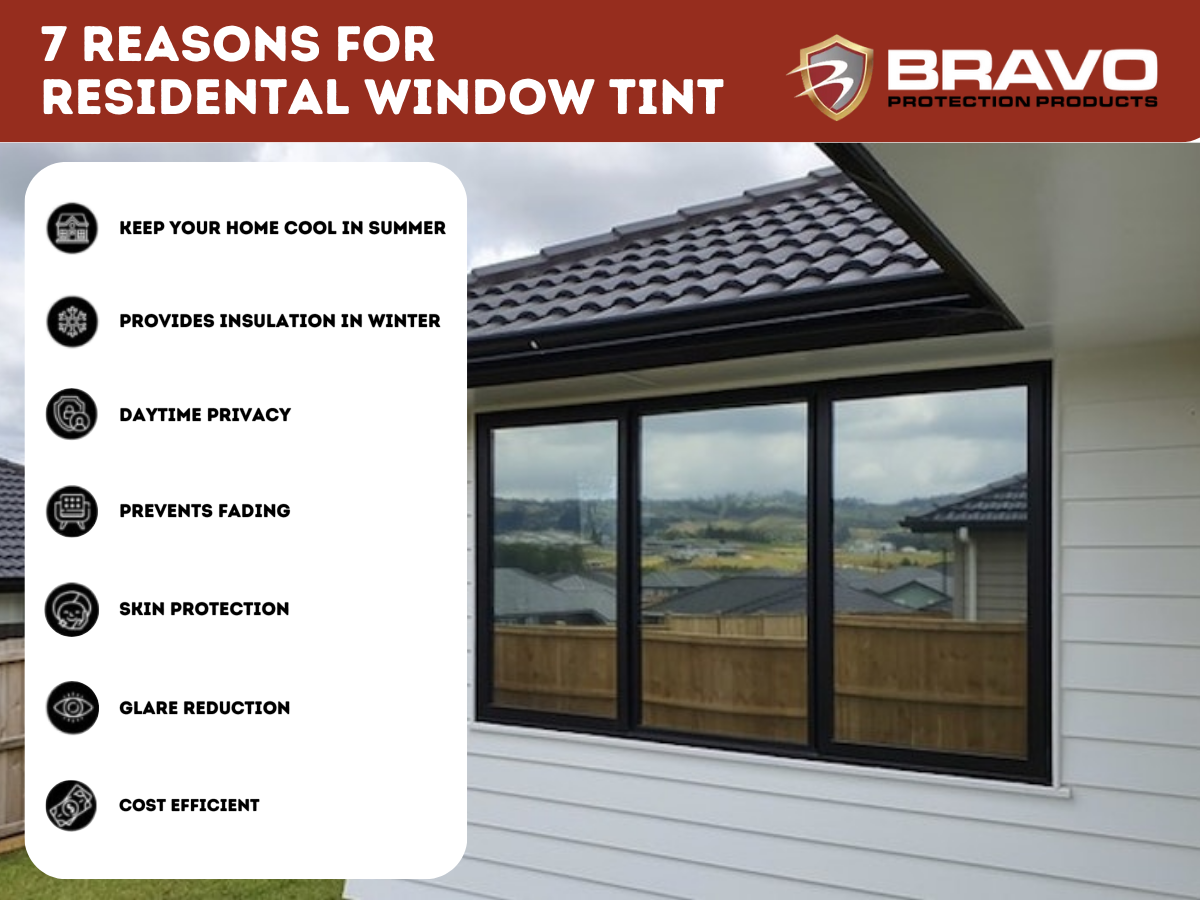Residential Window Tint: Enhance Comfort and Reduce Glow Indoors
Exactly How Residential Home Window Tinting Improves Your Home's Power Effectiveness
Residential home window tinting offers an engaging remedy for homeowners seeking to boost energy effectiveness within their living rooms. By using specialized films to windows, it successfully lowers heat transfer, therefore maintaining interior temperature levels and minimizing the requirement for extreme heating or air conditioning.
Recognizing Window Tinting
Recognizing home window tinting is essential for homeowners seeking to improve both convenience and power performance in their living rooms. Residential Window Tint. Home window tinting entails the application of a slim movie to the inside or outside surface of glass windows. This movie can considerably modulate the amount of sunshine and warmth that gets in a home, therefore influencing interior environment conditions
There are numerous kinds of window tinting movies offered, each with unique homes. The effectiveness of home window tinting is commonly measured by its Visible Light Transmission (VLT) percent, which indicates how much light can pass via the film.
Benefits of Power Effectiveness
Home window tinting not only enhances looks but also plays a substantial function in boosting energy performance within property rooms. By reducing warmth transfer with home windows, tinted films develop a much more steady interior environment, which can result in significant reductions in power consumption for home heating and air conditioning. This power performance equates right into lower utility expenses, providing home owners with substantial long-lasting financial savings.

Additionally, window tinting boosts the convenience of living rooms. By decreasing glow and blocking harmful UV rays, colored windows create an even more pleasurable environment, which can bring about boosted well-being for occupants. The defense against UV rays additionally assists preserve furniture and floor covering from fading, adding to the longevity of house products.
Exactly How Tinting Works
Tinting movies operate via a combination of innovative materials and innovations made to regulate the amount of solar power going into a home. Mostly composed of polyester, these movies typically incorporate metal or ceramic particles that soak up and reflect warmth. This dual capability permits them to substantially reduce the penetration of ultraviolet (UV) rays and infrared radiation while allowing noticeable light to travel through.
The effectiveness of window tinting is gauged by its solar heat gain coefficient (SHGC), which indicates just how much solar power is transferred through the window. Reduced SHGC values are preferable as they signify better heat being rejected. In addition, window colors can include a variety of shades, enabling homeowners to personalize their visual choices while enhancing energy effectiveness.
In addition, these films function as an obstacle, protecting against heat loss during colder months by showing indoor heat back right into the living room. This thermal insulation effect complements the cooling benefits gotten throughout warmer months, adding to a well balanced interior environment year-round. By taking care of solar power effectively, residential window tinting not just enhances comfort but also plays an important role in reducing energy usage and lowering utility bills.
Choosing the Right Tint

There are various visit site types of home window films offered, including dyed, metalized, and ceramic. Ceramic films supply excellent warmth control without jeopardizing presence and are very sturdy, making them a popular choice.
Visible light transmission (VLT) is one more critical factor, as it indicates the amount of natural light that can go through the tinted glass. Homeowners need to pick a color with a VLT that complements their lighting choices while still providing adequate glare reduction.
Additionally, assessing the solar heat gain coefficient (SHGC) can assist figure out exactly how well a tint can block heat from sunlight. A reduced SHGC indicates better heat control, ultimately boosting power performance.
Setup and Maintenance Tips
Proper installment and maintenance are crucial elements in optimizing the benefits of residential home window tinting. To accomplish optimum results, it is recommended to employ a qualified specialist for setup. This makes certain that the color is applied appropriately, preventing air bubbles, wrinkles, or imbalance that could endanger performance. Specialists likewise use specialized strategies and tools, which can boost the toughness and efficiency of the color.
Adhering to installation, maintenance is vital to prolong the life of the home window movie. It is advised to wait at the very least 30 days prior to cleaning the tinted home windows to allow the adhesive to treat completely.
Attending to these concerns immediately can avoid additional damage and maintain power performance. By sticking to these setup and maintenance suggestions, property owners can ensure their home window tinting proceeds to offer significant energy savings and convenience for years to come.
Final Thought
In final thought, domestic home window tinting offers as a reliable service for enhancing power effectiveness within homes. By decreasing heat transfer and blocking damaging UV rays, window movies contribute to decrease power consumption and boosted indoor convenience. The option of ideal tinting materials, along with proper installment and upkeep, better takes full advantage look at this site of these advantages. Inevitably, home window tinting represents a sustainable investment that not only reduces energy costs yet additionally promotes a comfy living setting throughout the year.
Home window tinting includes the application of a thin movie to the interior or exterior surface area of glass windows. By reducing warm transfer browse around this web-site with home windows, colored movies develop an extra steady interior environment, which can lead to significant decreases in energy intake for home heating and air conditioning.The efficiency of window tinting is determined by its solar warm gain coefficient (SHGC), which indicates how much solar energy is transmitted via the home window. By handling solar energy properly, household home window tinting not just improves comfort however additionally plays a vital function in decreasing power intake and decreasing utility expenses.
By reducing heat transfer and blocking dangerous UV rays, home window movies contribute to reduce energy usage and enhanced indoor comfort.